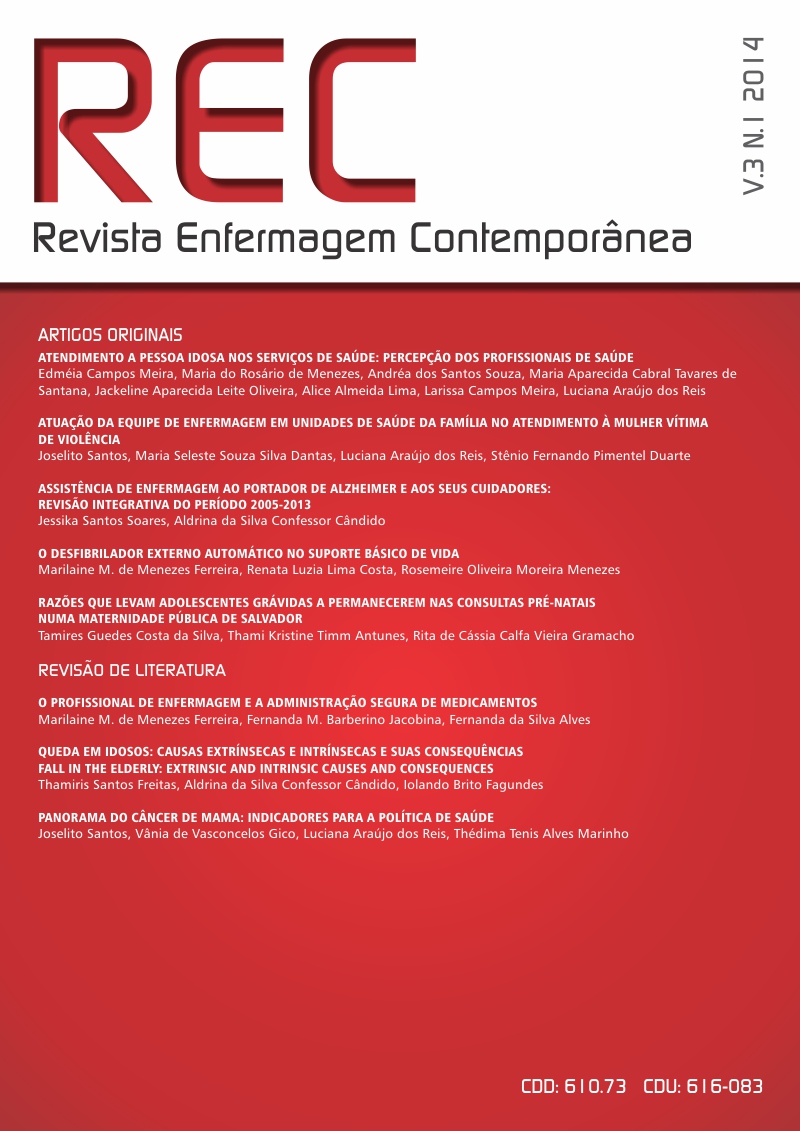FALL IN THE ELDERLY: EXTRINSIC AND INTRINSIC CAUSES AND CONSEQUENCES
DOI:
https://doi.org/10.17267/2317-3378rec.v3i1.292Keywords:
Aging, Elderly health, Accidental falls, Prevention of accidents, NursingAbstract
Aging is the process that undermines healthy adults , reducing their physiological reserves and generating increased vulnerability to many diseases. Fall is one of the main problems of the elderly. It is defined as an unintended displacement of the body at a lower level compared to the initial position, unable to fix in a timely manner, determined by circumstances multifactorial compromising stability. This event comprises causal elements classified as intrinsic and extrinsic. In this perspective, the goal of this article was to investigate how nursing can contribute to reducing the incidence of falls in the elderly. With this purpose , we performed a literature survey of national literature about the subject, based on texts from Medline, Lilacs, Scielo , Virtual Library of Health, as well as books, texts and tesis. The results of this research demonstrate that allowed most falls occur in elderly women, most are aged between 70 and 79 years and don’t living alone, and its principal place of fall they residence, and even if they should consider extrinsic factors arising from physiological or pathological processes of aging and extrinsic causes, represented by environmental factors as essential when establishing preventive measures to prevent falls.



